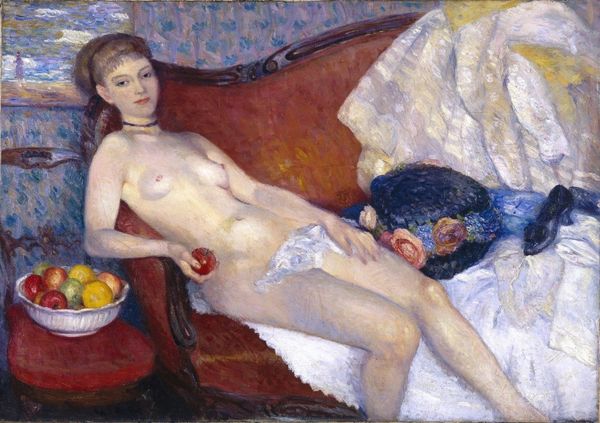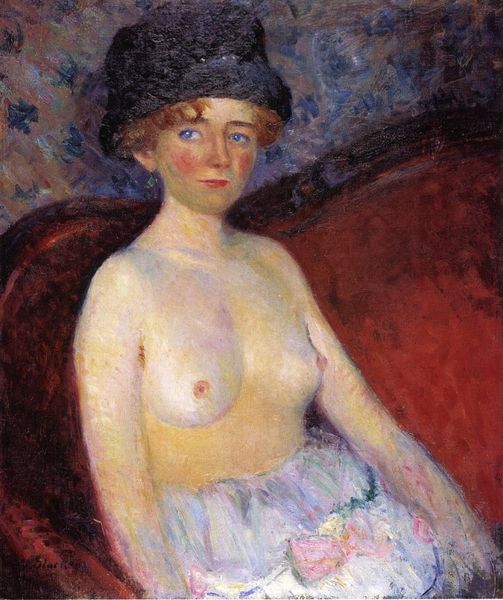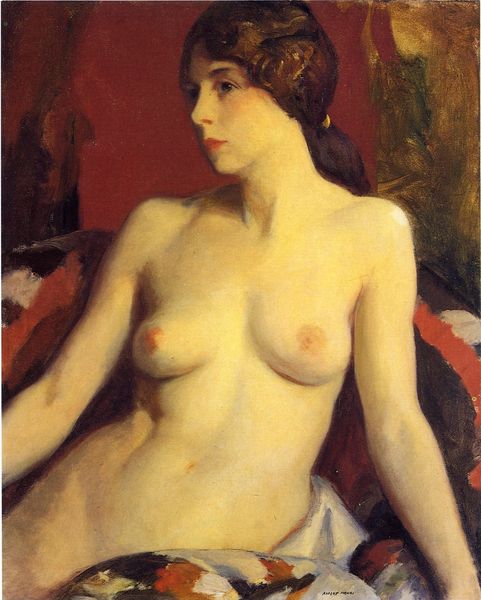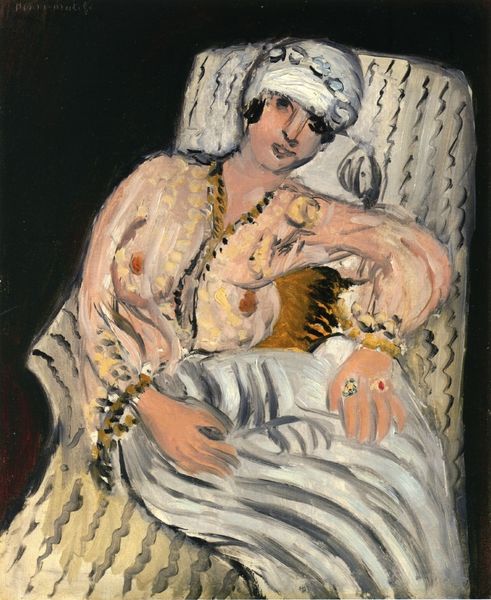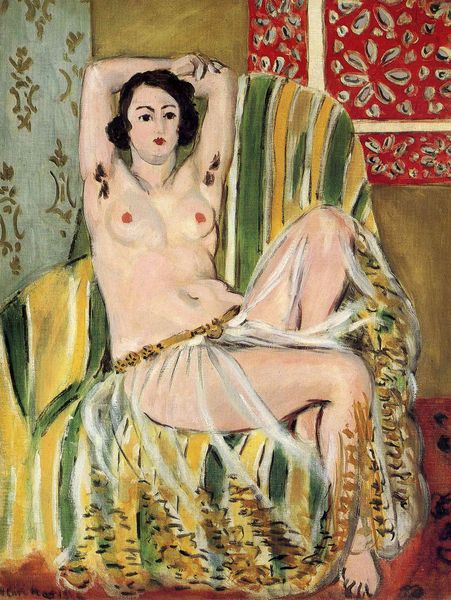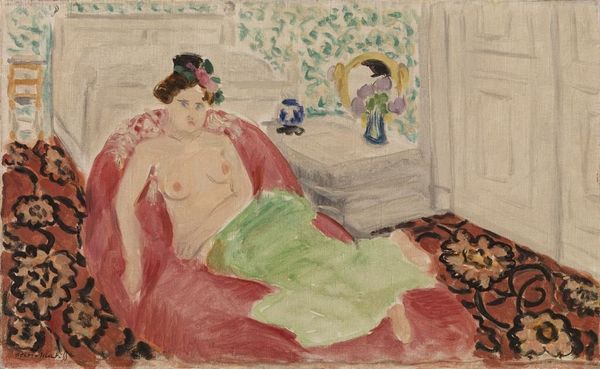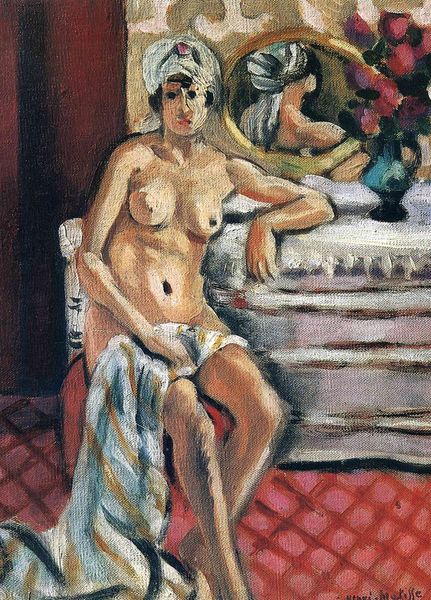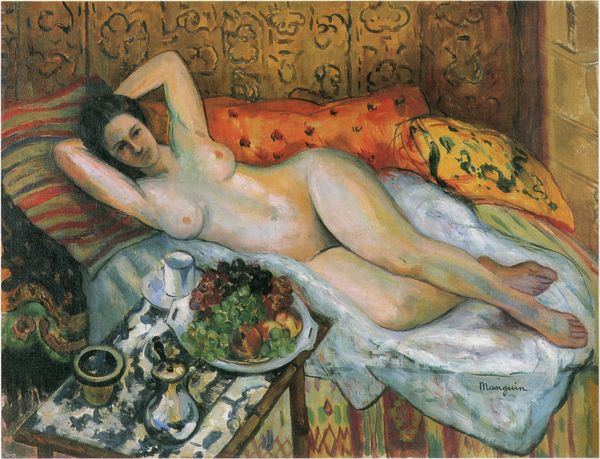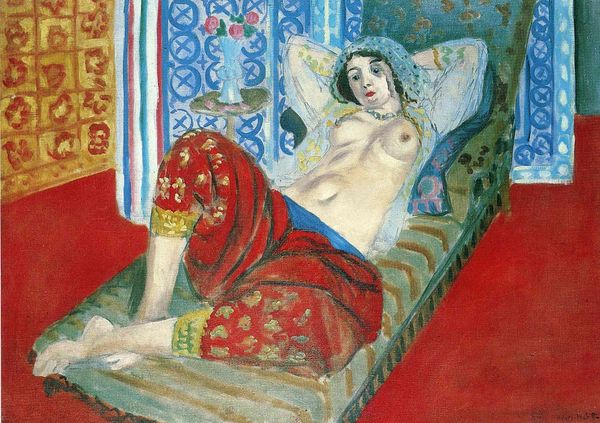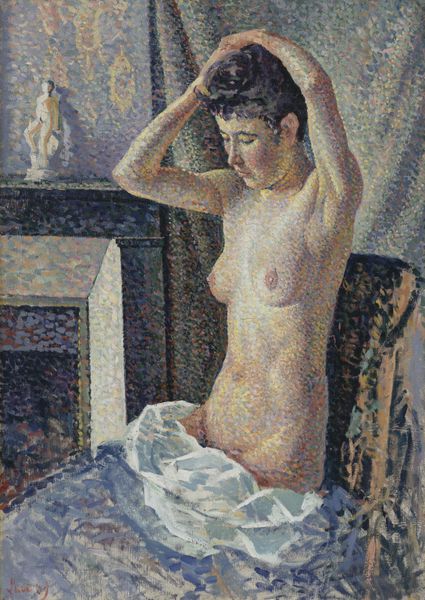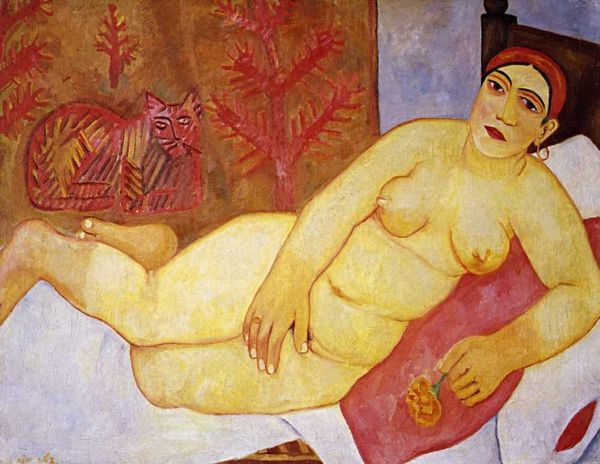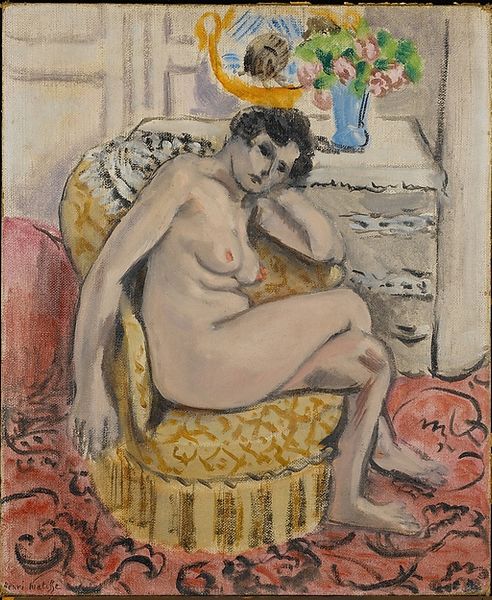
#
abstract painting
#
possibly oil pastel
#
oil painting
#
neo expressionist
#
acrylic on canvas
#
facial painting
#
painting painterly
#
painting art
#
portrait art
#
fine art portrait
Copyright: Public domain US
Curator: What strikes me first about Henri Matisse's "Nude," created around 1920, is the interplay of textures. There’s a definite tension between the smooth, almost flat treatment of the subject’s body and the patterned backgrounds. What is your immediate impression? Editor: The pervasive ordinariness of the scene feels rather pointed, don't you think? It reads as an active engagement with the power structures that control female representation, turning them upside down with its mundane lack of glamor. It reads like a response to the dominant male gaze of the period. Curator: Interesting perspective. From a purely visual point, I notice how Matisse uses contrasting patterns—the floral chair, the striped wall hanging—to create a vibrant but ultimately flattening effect, pushing the figure forward. This approach divorces her from a realistic spatial context. Editor: And isn’t the art historical context of the artist and subject important? By subverting our expectations, Matisse invites the viewer to question those norms and actively examine their biases about gender, sexuality, and who gets to control representation. I believe the gaze that renders the artist powerful does the same for the nude woman as she stares back at the painter in the room and beyond. Curator: But isn’t that also because the brushstrokes are so loose, the color palette restrained? It feels like a conscious departure from the more polished academic nudes, emphasizing instead the pure, almost crude form. Editor: Yes, it is both those things. These decisions create something that has an important connection with that time of post-war reckoning. There is less pressure on aesthetic conventions because those in society are changing rapidly as well. There is a powerful push and pull there that really grabs me! Curator: Agreed, though perhaps, I gravitate more towards appreciating its visual language and composition. Ultimately, though, there's more at stake here. Editor: Absolutely! There is a way in which it's less an exercise in formalism than a profound act of social and aesthetic rebellion, reflecting the complex currents of its time. It provides a powerful space for dialogue.
Comments
No comments
Be the first to comment and join the conversation on the ultimate creative platform.
